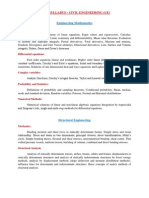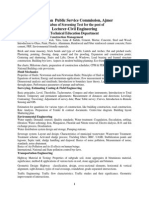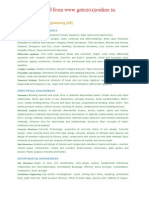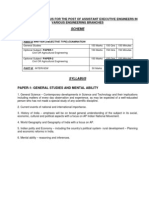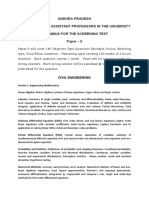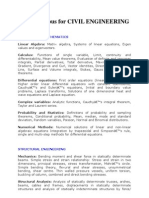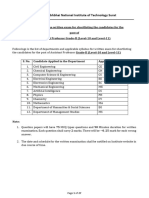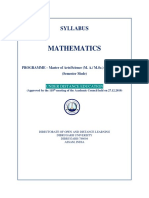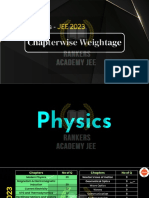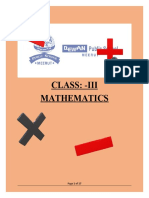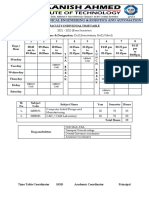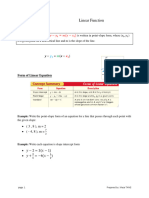0% found this document useful (0 votes)
29 views2 pagesSyllabus For Civil Engineering
The document outlines the syllabus for the screening test for the position of Assistant Professor Grade – II in the Civil Engineering department at the National Institute of Technology, Kurukshetra. It covers various topics including Engineering Mechanics, Solid Mechanics, Structural Analysis, Construction Materials and Management, Concrete and Steel Structures, Soil Mechanics, Fluid Mechanics, Hydraulics, Hydrology, Irrigation, Water and Waste Water Quality and Treatment, Air Pollution, Municipal Solid Wastes, Transportation Infrastructure, Traffic Engineering, and surveying principles. Each section details key concepts and methodologies relevant to the respective subject areas.
Uploaded by
vikasCopyright
© © All Rights Reserved
We take content rights seriously. If you suspect this is your content, claim it here.
Available Formats
Download as PDF, TXT or read online on Scribd
0% found this document useful (0 votes)
29 views2 pagesSyllabus For Civil Engineering
The document outlines the syllabus for the screening test for the position of Assistant Professor Grade – II in the Civil Engineering department at the National Institute of Technology, Kurukshetra. It covers various topics including Engineering Mechanics, Solid Mechanics, Structural Analysis, Construction Materials and Management, Concrete and Steel Structures, Soil Mechanics, Fluid Mechanics, Hydraulics, Hydrology, Irrigation, Water and Waste Water Quality and Treatment, Air Pollution, Municipal Solid Wastes, Transportation Infrastructure, Traffic Engineering, and surveying principles. Each section details key concepts and methodologies relevant to the respective subject areas.
Uploaded by
vikasCopyright
© © All Rights Reserved
We take content rights seriously. If you suspect this is your content, claim it here.
Available Formats
Download as PDF, TXT or read online on Scribd
/ 2







